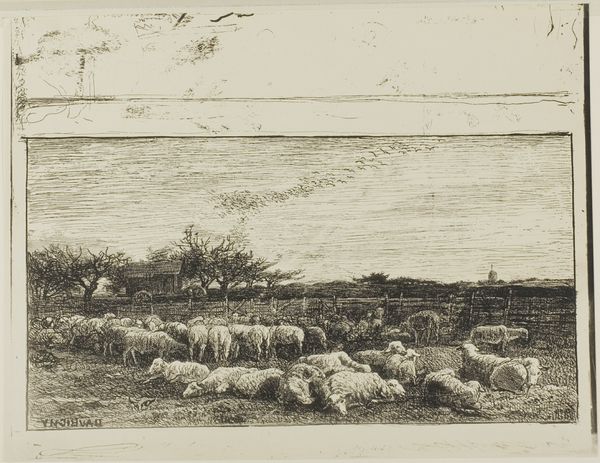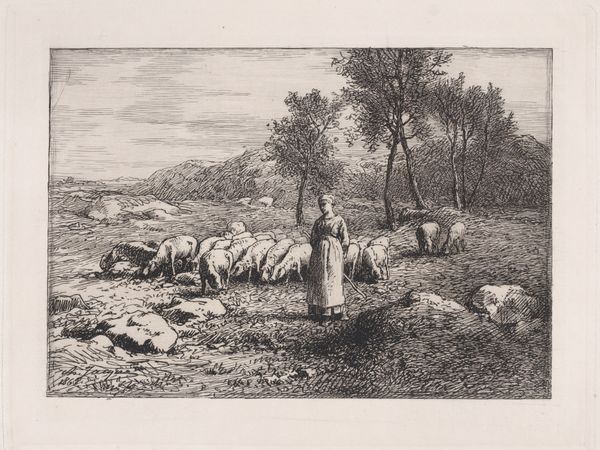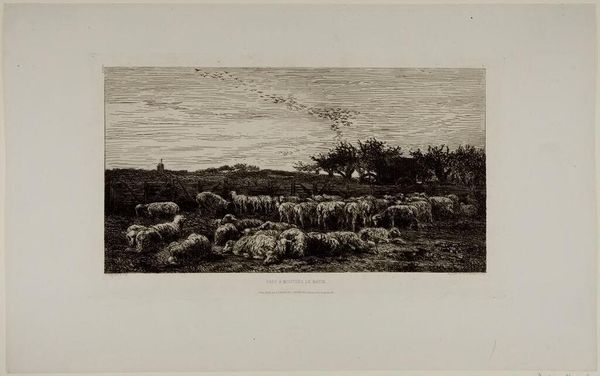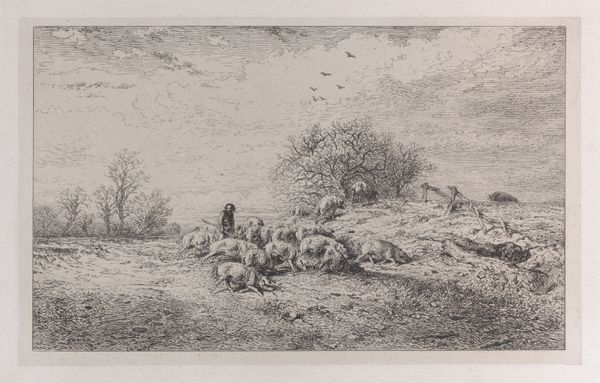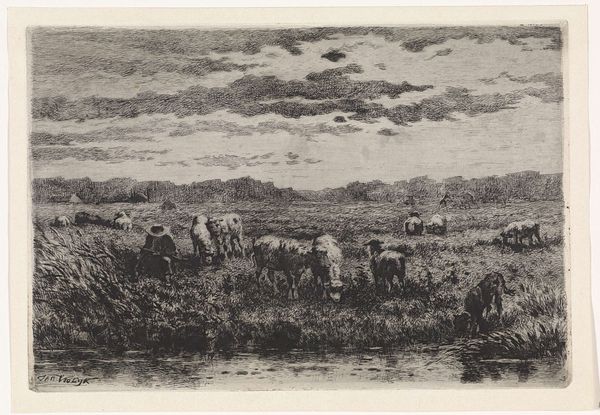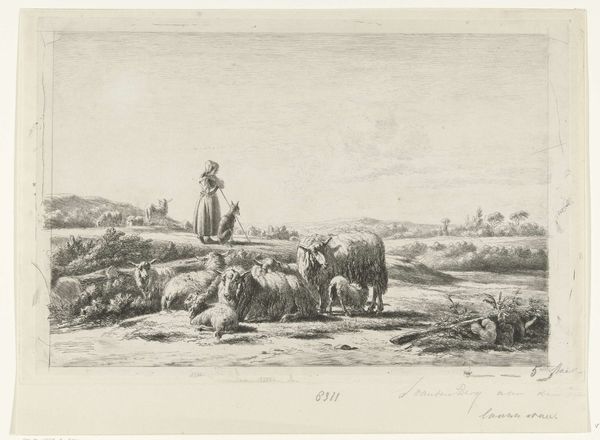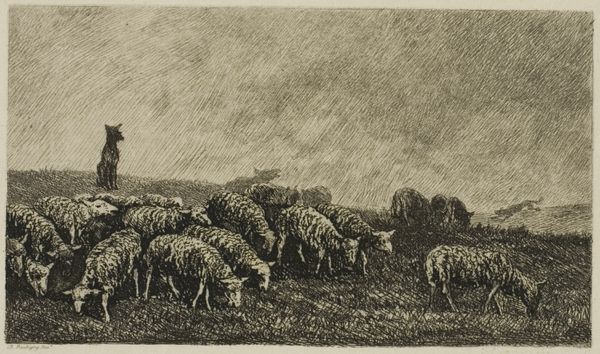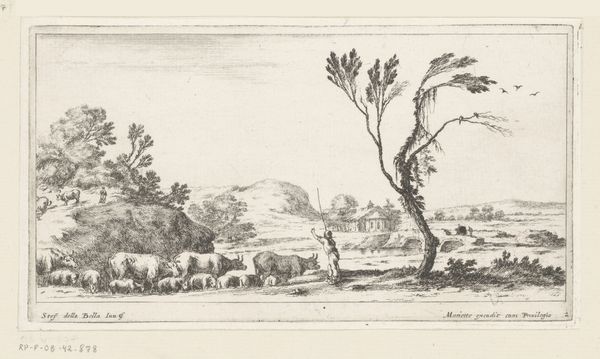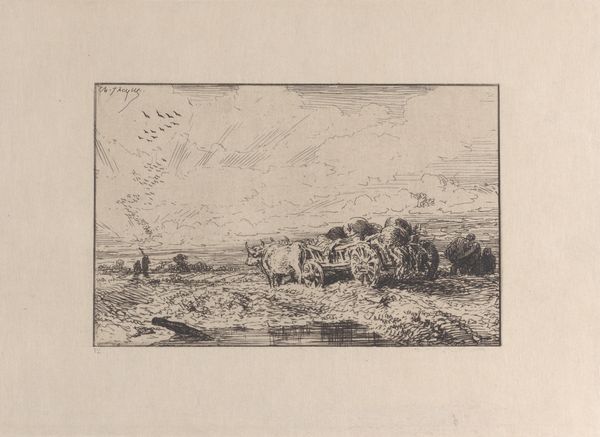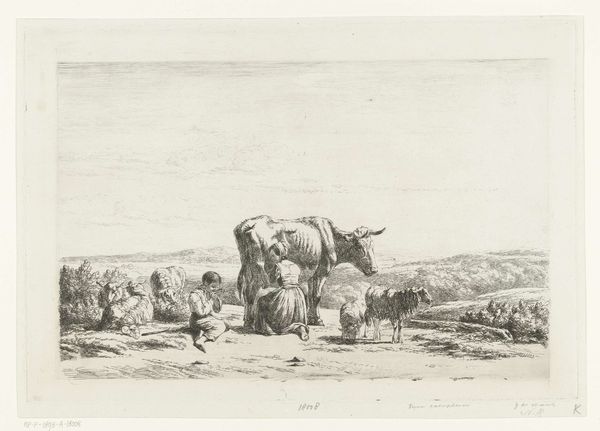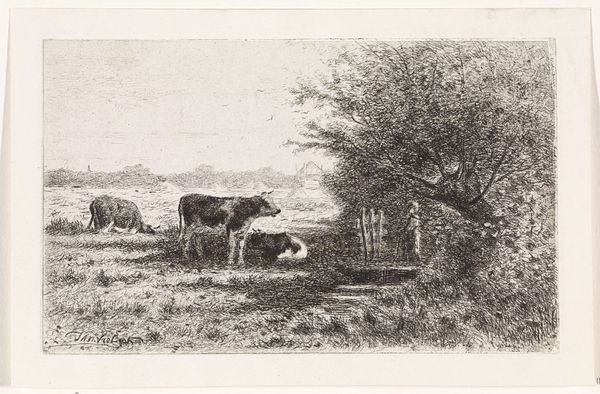
drawing, print, etching, paper
#
drawing
# print
#
impressionism
#
etching
#
landscape
#
paper
#
naturalistic tone
#
france
#
line
#
genre-painting
#
realism
Dimensions: 183 × 343 mm (image); 220 × 376 mm (plate); 274 × 434 mm (sheet)
Copyright: Public Domain
Curator: Let’s turn our attention to Charles-François Daubigny's "Meadow with Sheep," an etching from 1860 currently held here at The Art Institute of Chicago. My initial impression is that it’s a surprisingly lively landscape given the stillness of the resting flock. Editor: Lively is a great word for it! But looking closer, what strikes me is how the process of etching allows for this intricate detail in representing wool, the wooden fence, even the foliage. This must have required skilled labor and quite a few etched plates. Curator: Absolutely, and it reflects Daubigny's commitment to printmaking as a medium, not just a means to reproduce his paintings. He elevated the etching process through meticulous craft. Considering the mid-19th century context, his integration of industry with depictions of rural life presents a quiet commentary on labor itself. Editor: Agreed. The sheep, however picturesque, are also commodities. They're rendered with almost anthropological detail, their poses suggesting a docile acceptance of their fate, framed by a rustic fence almost seeming like a loose corralling, suggesting larger societal control. The small church steeple on the horizon connects them to religious ideals and a hierarchical structure of that society. Curator: And the labor! Sheep farming shaped agrarian economies, and in this etching we witness that first step, before textile production completely transforms wool into an industrial product for the urban bourgeoisie to consume. Daubigny makes us consider this supply chain by freezing the frame at this seemingly idyllic pastoral scene. Editor: Exactly. Think of it also in relation to contemporary artistic trends. This was a time when artists began focusing more on rural, working class lives, imbuing their images with realism that forced viewers to confront the sources and human costs of what they consumed. And Daubigny isn’t idealizing country life; it shows its realities, if gently. Curator: Indeed, he draws from French Realism. Looking at the flock, note the way the lines delineate texture and form: dense curls contrasting with the flatness of the meadow, almost as if rendered in layers of materiality that add depth through shadow and light. This gives an immersive feel beyond the linear perspective. Editor: This naturalistic depiction, avoiding sentimentality, positions the scene as part of the cycle of production. Each etched line isn’t just representation, but an active participation in the presentation of both nature and labor’s role. Ultimately, this small image holds powerful cultural observations in such an everyday vision. Curator: Agreed; there’s immense thought layered within this scene, that almost hides within its simplistic beauty, and even the labor invested into making such a piece really gives context to our understanding. Editor: Well, now when I see such naturalistic beauty, my perception definitely involves more thinking than feeling; what do you think?
Comments
No comments
Be the first to comment and join the conversation on the ultimate creative platform.
